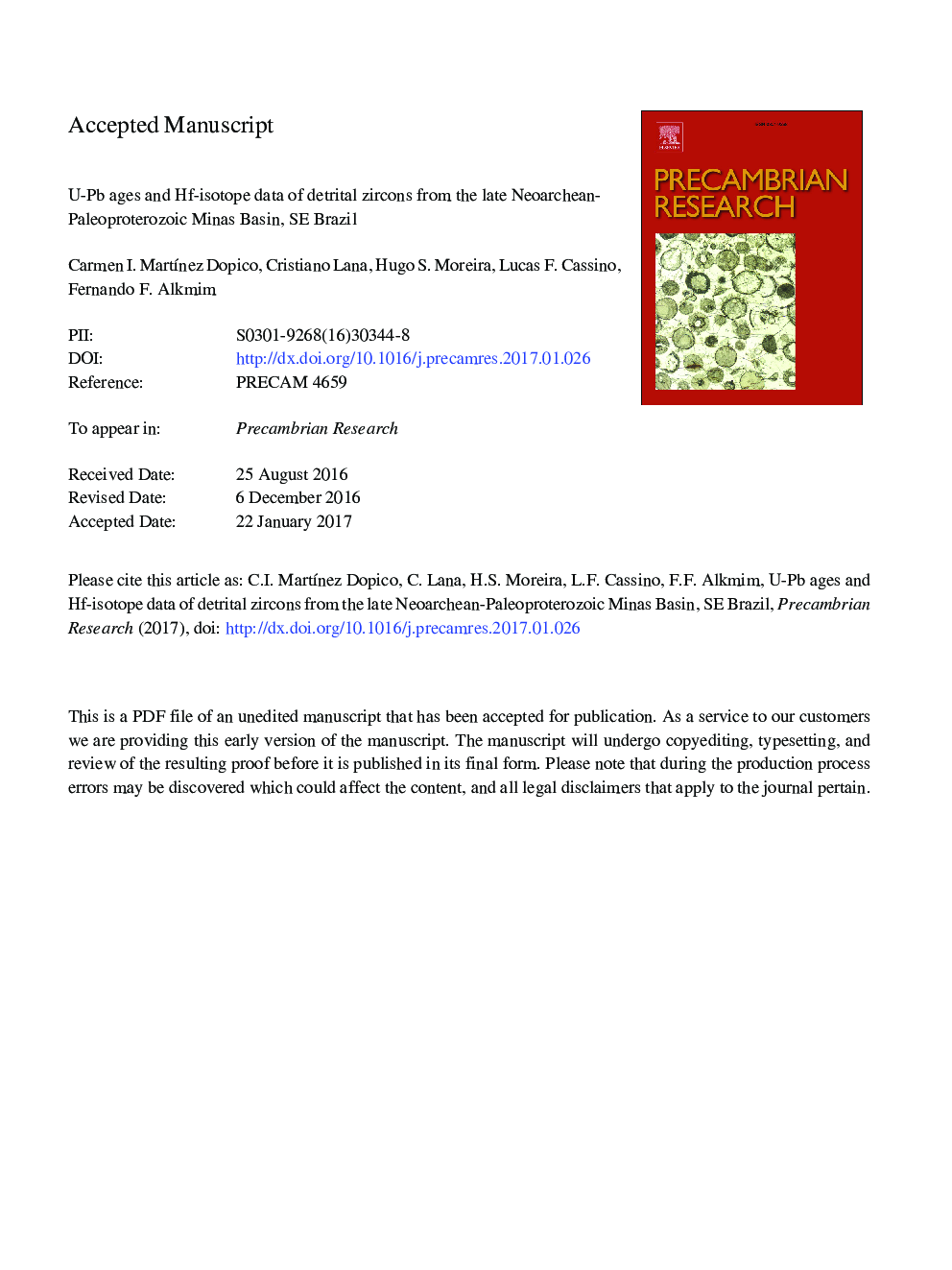| Article ID | Journal | Published Year | Pages | File Type |
|---|---|---|---|---|
| 5784888 | Precambrian Research | 2017 | 55 Pages |
Abstract
Because of its world-class iron ore deposits and promising Au and U mineralizations, the late Neoarchean to Paleoproterozoic Minas Basin (Minas Supergroup, SE of Brazil) is one of the best-studied basins in South America. However, the lack of datable interlayered volcanic rocks prevented discourse over ages of the strata, the sources and the nature of its ore deposits. In this paper, we present detrital zircon U-Pb age patterns coupled with Lu-Hf data for 18 samples, representing different stages of the Minas Basin evolution (â¼2000 analyzed zircons). Age spectra for the main basal unit (Moeda Formation) show a classic rift-related detrital zircon pattern, characterized by multiple autochthonous sources, which in turn are much older than the age of deposition. Maximum age for the rifting event is constrained at ca. 2600 Ma. Detritus accumulated at the base of the Minas Supergroup were derived from Archean source rocks and their sedimentation was marked by differential uplift of the Archean crust, shortly after the 2730-2600 Ma high-K calc-alkaline magmatism (Mamona Event). The age of the BIF deposits is younger than 2600 Ma, most likely coinciding with the great oxygenation event between 2400 and 2200 Ma and the precipitation of banded iron deposits worldwide. Detrital zircons from the topmost units of the Minas strata suggest that tectonic inversion and closure of the basin took place at ca. 2120 Ma with the deposition of the synorogenic Sabará Group. Rhyacian zircon supply showing juvenile Hf signatures gives evidence of a late Rhyacian amalgamation between the Mineiro Belt and the craton. The εHf signatures support the hypothesis that the Archean crystalline crust of the craton was mostly built by crust-mantle mixing processes, with a successive decrease of εHf values in zircons crystallized after 3250 Ma and minor mantle-like additions after Paleoarchean times. Regionally, our dataset supports previous interpretations of a long-lived evolution of the southern São Francisco Craton comprising a succession of convergent island arcs, small microplate collisions, and development of Archean convergent and divergent basins that evolved between Archean and Paleoproterozoic times.
Related Topics
Physical Sciences and Engineering
Earth and Planetary Sciences
Geochemistry and Petrology
Authors
Carmen I. MartÃnez Dopico, Cristiano Lana, Hugo S. Moreira, Lucas F. Cassino, Fernando F. Alkmim,
